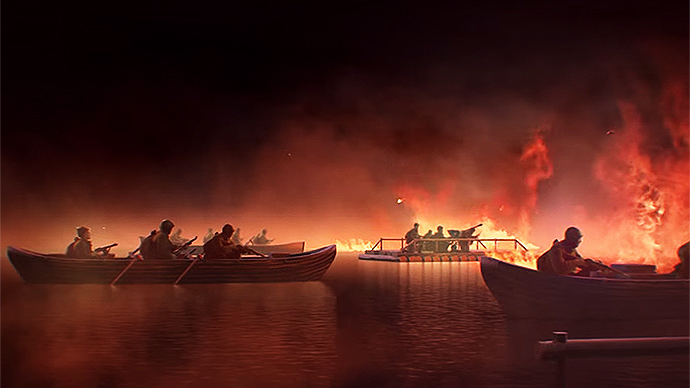Closer than they seem: Check key WW2 Eastern Front battles in 3D

What the majority of us today has seen of World War II horrors are faded monochrome pictures, echoes from a distance past. RT cuts across the 75 years that separate the bloodiest war in the world from these days with 3D battle reenactments.
Some of the deadliest and fiercest battles of the Great Patriotic War – the Eastern Front of WW2 as it is known in Russia – also decided the fate of the whole global conflict between the Axis and the Allies. Check if you know them all.
They were doomed from the outset but never surrendered: The 10,000 defenders of the Brest Fortress were encircled and cut off in the very beginning of Hitler’s June 1941 Blietzkrieg – but held out under heavy shelling for more than a week. The tragic fate and courageous resistance of the Soviet fortress in Belarus became legendary.
READ MORE: ‘Dying, but won’t surrender’: Brest Fortress resists the Blitzkrieg
Fought between October 1941 and early 1942, the Battle of Moscow became the first time when the seemingly unstoppable Nazi war machine was defeated on the battlefield. It cost the Soviet defenders just under 2 million lives, while the German army lost half a million men, injured or killed.
READ MORE:Moscow’s last stand: How Soviet troops defeated Nazis for first time in WW2
The largest and one of the bloodiest confrontations in the history of mankind, the six-month Battle of Stalingrad of 1942-43 turned the tide of World War 2 – and a whole city into rubble. It is said that the average life expectancy of a soldier in the horrific meat grinder was at one point only 24 hours.
Multinational Soviet troops lost more than 1.1 million soldiers in casualties, while Nazi German troops and their European collaborators lost some 1.5 million. Despite the bitter price, Hitler ruled out that the encircled German army could surrender, and it was only due to a German field marshal disobeying the order that the remains of Wehrmacht forces were captured alive.
READ MORE:Halting Hitler's push: Bloodiest WWII battle in RT's 3D reconstruction
The Battle of Kursk is known as the biggest tank clash in history: over 8,000 armored vehicles, 5,000 planes and 3 million soldiers fought from both sides near the city some 500 kilometers southwest of Moscow.
While Stalingrad spelt the first major triumph of the anti-Nazi forces in the war, sending waves of hope across the world, it was in the 49 battles starting from Kursk that the Soviet army gained a platform to start a counter-offensive against Hitler.
READ MORE: Turning the tide of WWII: Biggest-ever tank battle in RT's 3D graphics
The Battle for Berlin — the final major WWII offensive that involved 3.5 million troops and lasted two weeks. From his bunker, Adolf Hitler was sending out orders to fight, even as more than 1 million Soviet and Allied troops surrounded the German capital. Only after Hitler’s suicide, his generals capitulated.
The German Instrument of Surrender took effect on May 8 at 23:01 CET. As this came after midnight Moscow time, May 9 was proclaimed Victory Day in the USSR.












